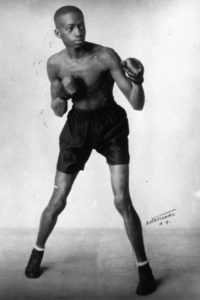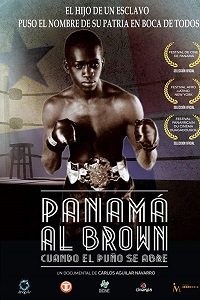By David Martinez / Boxing Historian / dmboxing.com
Al Brown was born in Colon, Canal Zone, Panama on July 5, 1902 with the birth name Alphonse Teofilo Brown .
 He began his boxing career in 1919 as a flyweight in the amateurs. He turned pro in March 1922, and later in his career made history by becoming boxing’s first Latin American world champion .
He began his boxing career in 1919 as a flyweight in the amateurs. He turned pro in March 1922, and later in his career made history by becoming boxing’s first Latin American world champion .
In 1923, he came to New York but was not allowed to fight beyond six rounds by the New York Commission, but that would change after he established himself as a top rated contender . Brown would later leave the United States and would fight extensively in Europe.
On May 21, 1926, Brown returned to New York to defeat Teddy Silva by a third round knockout . After that fight, he returned to Europe earning a knockout win in Paris over journeyman Antoine Merlo. At that stage of his career, Brown had an impressive record under his belt with 40 wins, 5 losses, and 4 draws .
After Charley Phil Rosenberg beat Bushy Graham in a fifteen round decision on February 4, 1927 in New York, Rosenberg would relinquish his bantamweight title because he exceeded the 118 pound weight limit. Rosenberg was trained by legendary Ray Arcel, and Whitey Bimstein, and manager Harry Segal.
The New York Commission then conducted several elimination bouts to obtain Rosenberg’s successor, and on June 18, 1929, Panama Brown (56-7-6 / 25 by KO) won the vacant NYSAC world title with a unanimous fifteen round decision over Gregorio Vidal (40-5-9 / 11 by KO) at Queensboro Stadium, Long Island City, New York.
Over the next six years, Brown remained active, defending his title eleven times in Denmark, France, Canada, Spain, Italy, and England. He also fought in many non-title fights in others cities world-wide.
On March 18, 1935, Brown lost a ten round non-title decision to Spanish born Baltazar Sangchilli, who was 10 inches shorter than Brown and nine years younger. This result led to a rematch title bout three months later, in which Sangchilli went on to win the bantamweight title via a fifteen round unanimous decision. Both bouts took place at Plaza de Toros de Valencia, Spain.
 After losing the title, Brown kept fighting, retiring twice and twice coming back, until he finally officially retired from the ring in 1942.
After losing the title, Brown kept fighting, retiring twice and twice coming back, until he finally officially retired from the ring in 1942.
There are different ring records listed for Brown but, to the best of my knowledge, this is the most accurate – 123 wins, 19 losses, 11 draws, and 2 no-decisions, with 55 wins by knockout. Brown had an incredible height for a bantamweight of 5′ 11″ plus a 76″ reach, both big advantages for a fighter at 118 pounds. Also notable is that, in over 150 bouts, he was never knocked out.
Brown was inducted into the World Boxing Hall of Fame in 1986, and into the International Boxing Hall of Fame in 1992.
Nat Fleischer, founder of Ring magazine & legendary boxing historian, rated Brown as the #10 greatest bantamweight of all time. Boxing Historian Bert Sugar ranked him the #61 greatest boxer of all time.
Arguably speaking, Brown is regarded as one of the greatest bantamweights of all time. Here is my personal ranking of the 10 greatest bantamweights; in order, they are Eder Jofre, Ruben Olivares, Fighting Harada, Carlos Zarate, Panama Al Brown, Manuel Ortiz, Pete Herman, Kid Williams, Johnny Coulon, and Joe Lynch. Two other great bantamweights were certainly George Dixon and Terry McGovern, but I rank them both in the featherweight division class (in case anybody is wondering why they are not listed with these bantamweights).
My late friend (R.I.P.) Emil DeLoreto and his wife Elizabeth, who were good Italian friends with Battling Battalino, witnessed at ringside Battalino’s decision win over Panama Al Brown on July 26, 1929 in Hartford, Connecticut. I am so blessed that Emil gave me a complete live round by round analysis of the fight.
At the age of 48, Panama Al Brown died in New York on April 11, 1951, after a bout with tuberculosis. He is buried in Amador Guerrero Cemetery, Panama City.

